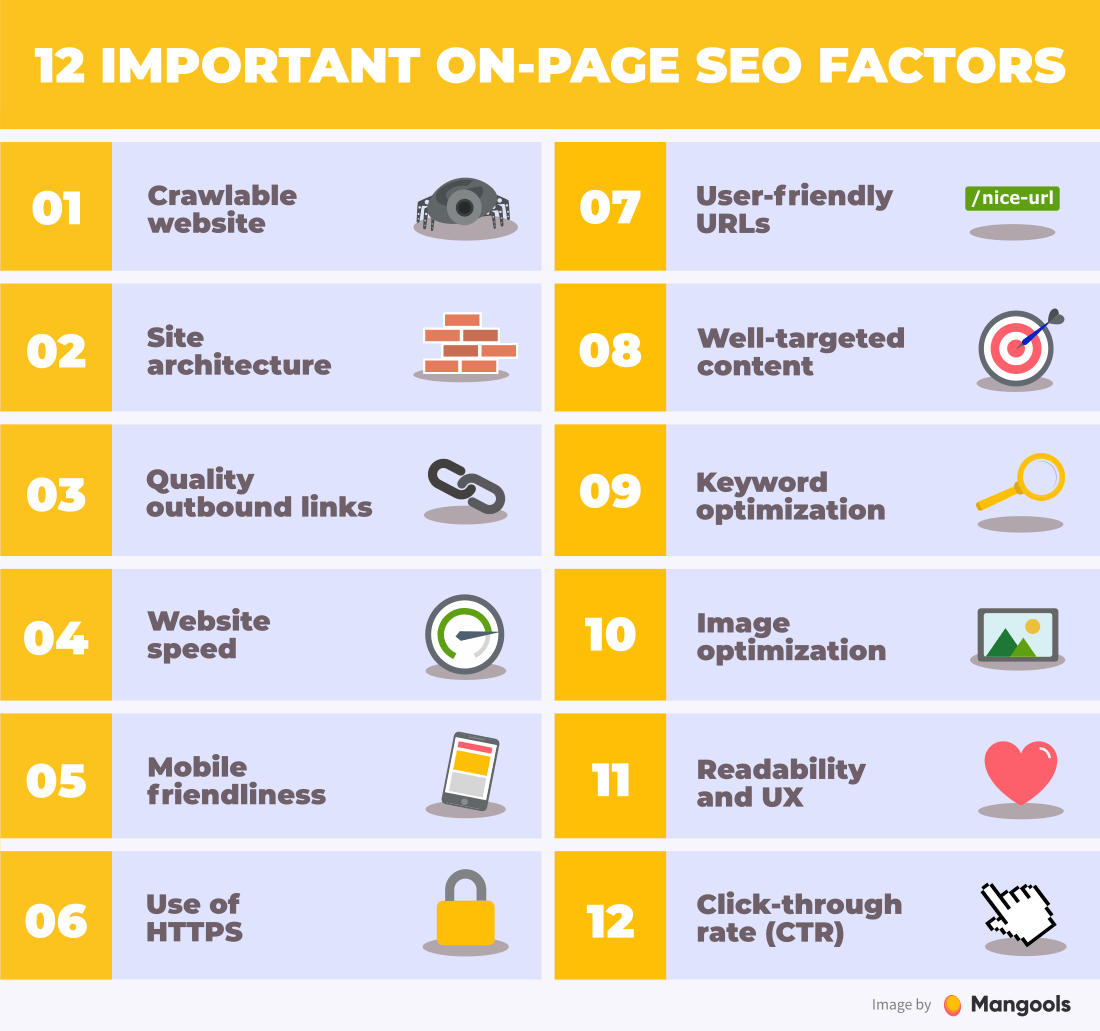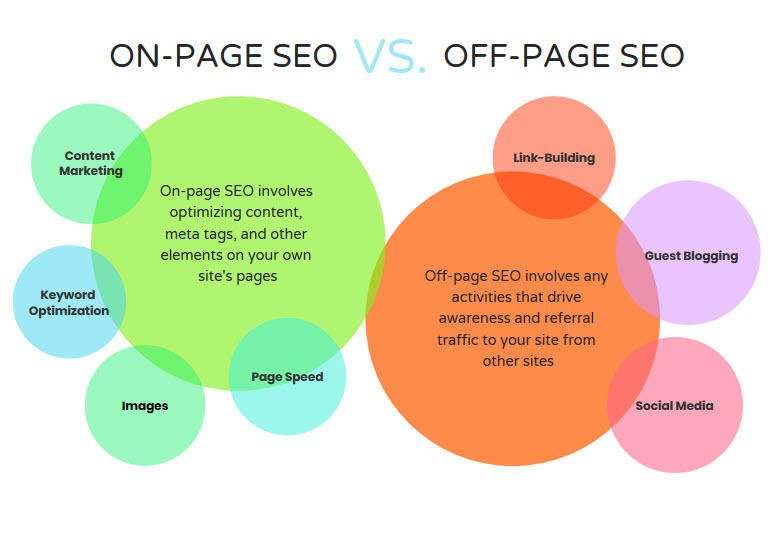
What is an example of on-site SEO?
On-site SEO, also known as on-page SEO, is the practice of optimizing individual web pages to rank higher in search engine results and attract more organic traffic. It involves optimizing various elements on your website, such as content, HTML tags, and site structure, to make it more search engine-friendly. On-site SEO is crucial for website success because it helps search engines understand your content and rank it accordingly. By implementing effective on-site SEO strategies, you can improve your website’s visibility, increase organic traffic, and ultimately drive more conversions.
Key Takeaways
- On-site SEO refers to optimizing your website’s content and structure to improve its visibility and ranking on search engines.
- On-site SEO is crucial for your website’s success as it helps search engines understand your content and rank it accordingly.
- Key elements of on-site SEO include title tags, meta descriptions, header tags, URL structure, and internal linking.
- To optimize your website for on-site SEO, focus on creating high-quality content, optimizing your website’s structure, and using relevant keywords.
- Effective on-site SEO techniques include optimizing your website’s loading speed, using responsive design, and optimizing images and videos.
- On-site SEO differs from off-site SEO, which focuses on building external links and social media presence.
- Keywords play a crucial role in on-site SEO, and you should use them strategically in your content and meta tags.
- Creating quality content is essential for on-site SEO, and you should focus on providing value to your audience.
- On-site SEO tools like Google Analytics and Yoast SEO can help you track your website’s performance and optimize it for search engines.
- Common on-site SEO mistakes to avoid include keyword stuffing, using duplicate content, and neglecting mobile optimization.
Understanding the Basics of On-Site SEO
On-site SEO refers to the optimization techniques that are implemented directly on your website to improve its visibility in search engine results. It involves optimizing various elements such as meta tags, headings, URLs, and internal linking structure. On-site SEO differs from off-site SEO, which focuses on external factors such as backlinks and social signals.
Search engines rank websites based on a variety of factors, including relevance, authority, and user experience. When a user enters a query into a search engine, it scans billions of web pages to find the most relevant results. On-site SEO helps search engines understand what your website is about and how relevant it is to a particular query. By optimizing your website’s on-site elements, you can increase its chances of ranking higher in search engine results.
Importance of On-Site SEO for Your Website
On-site SEO is crucial for the success of your website for several reasons. Firstly, it helps search engines understand your content and rank it accordingly. By optimizing your website’s on-site elements, you can provide clear signals to search engines about the relevance and quality of your content. This can significantly improve your website’s visibility in search engine results and attract more organic traffic.
Secondly, on-site SEO plays a crucial role in improving user experience. When users visit your website, they expect to find relevant and high-quality content that meets their needs. By optimizing your website’s on-site elements, you can ensure that users can easily navigate your site, find the information they are looking for, and have a positive experience. This can lead to increased user engagement, longer time spent on your site, and ultimately higher conversion rates.
Key Elements of On-Site SEO

There are several key elements of on-site SEO that you need to optimize to improve your website’s visibility in search engine results. These include:
1. Title Tags: The title tag is an HTML element that specifies the title of a web page. It is displayed as the clickable headline in search engine results and is an important ranking factor. To optimize your title tags, make sure they are descriptive, contain relevant keywords, and are unique for each page.
2. Meta Descriptions: The meta description is a brief summary of a web page’s content. It is displayed below the title tag in search engine results and can influence click-through rates. To optimize your meta descriptions, make sure they are compelling, contain relevant keywords, and accurately describe the content of the page.
3. Heading Tags: Heading tags (H1, H2, H3, etc.) are HTML elements that define the headings and subheadings on a web page. They help search engines understand the structure and hierarchy of your content. To optimize your heading tags, make sure they are descriptive, contain relevant keywords, and accurately reflect the content of the page.
4. URL Structure: The URL structure is the format of the web page’s address. It should be concise, descriptive, and contain relevant keywords. Avoid using long and complex URLs that are difficult for users and search engines to understand.
5. Internal Linking: Internal linking refers to linking to other pages within your website. It helps search engines discover and index new pages, improves website navigation, and distributes link equity throughout your site. To optimize your internal linking, make sure you use descriptive anchor text, link to relevant pages, and avoid excessive linking.
6. Image Optimization: Image optimization involves optimizing the images on your website to improve their visibility in search engine results. This includes using descriptive file names, alt tags, and captions, as well as compressing images to reduce file size and improve page load speed.
How to Optimize Your Website for On-Site SEO
Optimizing your website for on-site SEO involves several steps. Here is a step-by-step guide to help you get started:
1. Conduct Keyword Research: Start by conducting keyword research to identify the most relevant and high-volume keywords for your website. Use keyword research tools like Google Keyword Planner or SEMrush to find keywords that are relevant to your content and have a high search volume.
2. Optimize Your Title Tags and Meta Descriptions: Once you have identified your target keywords, optimize your title tags and meta descriptions accordingly. Make sure they are descriptive, contain relevant keywords, and accurately reflect the content of each page.
3. Optimize Your Heading Tags: Use heading tags (H1, H2, H3, etc.) to structure your content and make it more readable for both users and search engines. Include relevant keywords in your heading tags to improve their visibility in search engine results.
4. Improve Your Website’s Speed: Website speed is a crucial ranking factor and can significantly impact user experience. Optimize your website’s speed by compressing images, minifying CSS and JavaScript files, and using caching plugins.
5. Make Your Website Mobile-Friendly: With the increasing use of mobile devices, it is essential to ensure that your website is mobile-friendly. Use responsive design techniques to make your website adapt to different screen sizes and provide a seamless user experience across all devices.
6. Create High-Quality Content: Content is king when it comes to on-site SEO. Create high-quality, informative, and engaging content that meets the needs of your target audience. Use relevant keywords naturally throughout your content and make sure it is well-structured and easy to read.
On-Site SEO Techniques That Work
There are several on-site SEO techniques that have been proven to be effective in improving search engine rankings. Here are a few techniques that you can implement on your website:
1. Use Schema Markup: Schema markup is a type of structured data that helps search engines understand the content on your website better. It provides additional information about your content, such as reviews, ratings, and product details, which can improve your website’s visibility in search engine results.
2. Optimize Your Images: Images play a crucial role in enhancing user experience and can also help improve your website’s visibility in search engine results. Optimize your images by using descriptive file names, alt tags, and captions, as well as compressing them to reduce file size.
3. Improve Your Website’s Navigation: A well-structured and easy-to-navigate website is essential for both users and search engines. Improve your website’s navigation by organizing your content into logical categories, using descriptive anchor text for internal links, and adding a sitemap to help search engines discover and index your pages.
4. Optimize Your URLs: URLs should be concise, descriptive, and contain relevant keywords. Avoid using long and complex URLs that are difficult for users and search engines to understand. Use hyphens to separate words in your URLs and avoid using special characters or numbers.
On-Site SEO vs. Off-Site SEO: What’s the Difference?

On-site SEO and off-site SEO are two different strategies that work together to improve search engine rankings. On-site SEO refers to the optimization techniques that are implemented directly on your website, such as optimizing title tags, meta descriptions, and content. Off-site SEO, on the other hand, refers to the techniques that are implemented outside of your website, such as building backlinks and social signals.
While on-site SEO focuses on optimizing your website’s on-page elements to improve its visibility in search engine results, off-site SEO focuses on building external signals that indicate the popularity and authority of your website. Both strategies are important for improving search engine rankings and should be implemented together for maximum impact.
The Role of Keywords in On-Site SEO
Keywords play a crucial role in on-site SEO as they help search engines understand the relevance and topic of your content. By using relevant keywords throughout your website’s content, meta tags, and headings, you can improve its visibility in search engine results.
When choosing keywords for your website, it is important to consider their relevance, search volume, and competition. Use keyword research tools to identify keywords that are relevant to your content and have a high search volume. Avoid using generic or overly competitive keywords that are difficult to rank for.
Creating Quality Content for On-Site SEO
Content is a crucial element of on-site SEO as it helps search engines understand the relevance and quality of your website. By creating high-quality, informative, and engaging content, you can improve your website’s visibility in search engine results and attract more organic traffic.
When creating content for your website, it is important to consider the needs and interests of your target audience. Conduct keyword research to identify relevant keywords that you can incorporate naturally into your content. Make sure your content is well-structured, easy to read, and provides value to your readers.
On-Site SEO Tools to Boost Your Website’s Performance
There are several on-site SEO tools available that can help you optimize your website and improve its performance. These tools provide valuable insights into various aspects of on-site SEO, such as keyword research, site speed optimization, and content analysis.
Some popular on-site SEO tools include Google Keyword Planner, SEMrush, Moz, and Yoast SEO. These tools can help you identify relevant keywords, analyze your website’s performance, and provide recommendations for improvement.
Example of On-Site SEO Factors – Mistakes to Avoid
When optimizing your website for on-site SEO, it is important to avoid common mistakes that can negatively impact your website’s performance. Some common on-site SEO mistakes to avoid include:
1. Keyword Stuffing: Keyword stuffing refers to the practice of overusing keywords in your content in an attempt to manipulate search engine rankings. This can result in a poor user experience and can lead to penalties from search engines.
2. Duplicate Content: Duplicate content refers to content that appears on multiple web pages within the same website or across different websites. Search engines penalize websites with duplicate content as it can confuse users and make it difficult for search engines to determine the most relevant page.
3. Poor Website Structure: A poorly structured website can make it difficult for users and search engines to navigate and understand your content. Make sure your website has a clear and logical structure, with well-organized categories and subcategories.
4. Ignoring Mobile Optimization: With the increasing use of mobile devices, it is essential to ensure that your website is mobile-friendly. Ignoring mobile optimization can result in a poor user experience and can negatively impact your website’s visibility in search engine results.
On-site SEO is a crucial aspect of website optimization that can significantly improve your website’s visibility in search engine results and attract more organic traffic. By optimizing various elements on your website, such as title tags, meta descriptions, and content, you can provide clear signals to search engines about the relevance and quality of your content.
To optimize your website for on-site SEO, make sure you conduct keyword research, optimize your title tags and meta descriptions, improve your website’s speed and mobile responsiveness, and create high-quality, SEO-friendly content. Avoid common on-site SEO mistakes such as keyword stuffing and duplicate content, and use on-site SEO tools to analyze your website’s performance and make improvements.
By implementing effective on-site SEO strategies, you can improve your website’s visibility, increase organic traffic, and ultimately drive more conversions.

If you’re interested in learning more about on-site SEO and its impact on your website’s visibility, you might also find our article on social media management helpful. Social media platforms play a crucial role in driving traffic to your site and improving your search engine rankings. Discover how to optimize your social media presence and leverage it for better on-site SEO by reading our article on social media management.
Check Out Our Services
Web Design | Social Media Marketing | Lead Generation | Website Maintenance | Contact
FAQs

What is on-site SEO?
On-site SEO refers to the practice of optimizing individual web pages in order to rank higher and earn more relevant traffic in search engines.
What are the benefits of on-site SEO?
On-site SEO can help improve the visibility and ranking of your website in search engine results pages, increase organic traffic, and enhance user experience.
What are some examples of on-site SEO techniques?
Some examples of on-site SEO techniques include optimizing title tags, meta descriptions, header tags, image alt tags, internal linking, and content optimization.
How do title tags affect on-site SEO?
Title tags are an important on-site SEO factor as they provide a brief and concise description of the content on a web page. Optimizing title tags with relevant keywords can help improve the visibility and ranking of your website in search engine results pages.
What is content optimization in on-site SEO?
Content optimization involves creating high-quality, relevant, and engaging content that is optimized for search engines. This includes using relevant keywords, optimizing meta descriptions, and ensuring the content is easy to read and understand.
What is internal linking in on-site SEO?
Internal linking involves linking to other pages within your website. This helps search engines understand the structure of your website and can improve the user experience by providing additional relevant content for visitors to explore.
Page article by Website Designer Near Me

Welcome to WebMagnet Designs, your go-to source for the latest in web design innovation. Discover new projects, trends, and insights tailored for our new customers. Dive into our vibrant collection of topics and news designed to inspire and inform. Join us on a journey of digital creativity and excellence.
Recent Post's
FREE quote


